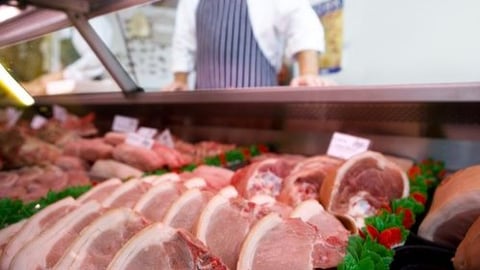EXCLUSIVE: How the Meat Industry Is Catching Up to Change
Sure, alternative proteins have made some noise over the past few years. Yes, inflation has sparked changes in what and how shoppers are buying at the fresh meat case. Looking out over a typical meat case, there are indeed a variety of unbranded, commodity-style offerings that don’t look much different than in past decades, at least at first glance.
All of that aside, the retail meat case is evolving and includes more variety for today’s shoppers who are seeking proteins that meet their personal preferences and needs. Michael Uetz, principal at Midan Marketing in Chicago, has had a front-row view of the meat sector during the course of his life and career, first growing up on his family’s cattle ranch and later as a meat industry thought leader at the National Cattlemen’s Beef Association and at the firm he founded with colleague Danette Amstein. Uetz weighed in on some of those changes during a recent interview with Progressive Grocer.
“It’s been an interesting journey. We used to preface everything with, ‘Well, the meat industry is really slow to change.' We’ve been saying that over the years, but I will tell you that we are making progress,” he declared.
Part of the slower pace of change was due to a mostly-shared mindset, based on the fact that meat is such an intrinsic part of people’s diets. “The years we lagged behind other areas of the food chain relevant to innovation commitment and change, it was, ‘If it isn’t broke, don’t fix it – everyone likes to eat meat,’” Uetz recalled, adding that different factors emerged to challenge such assumptions. “There have been some dynamics that have come into play over the last five to seven years that have caused us to rethink how we go to market. I’ve seen more changes in the past five years than during the previous 15 years.”
One wake-up call was the advent of meat alternatives, following major inroads in the dairy-based alternative market. “We were engaged to protect our real estate when something like plant-based alternatives came in and took over part of the meat case. That was shocking to some, and when we realized that we had competition and understood what the competition was doing, we started to take notes,” he said. “We found that those making plant-based products had savvy marketing.”
That realization, along with other evolving mindsets and pandemic-related shifts, stoked competitive fires and led to a new period of R&D and marketing in the meat industry that has changed the landscape of retail meat departments. “I think it’s very exciting, as we understand that we need to focus on the end user, the meat consumer,” Uetz said. “It’s upped our game.”
With that focus on the consumer comes better ways of sharing the stories that shoppers clearly want to hear about where their meat comes from and how it’s produced. To be sure, storytelling has become an important aspect of marketing efforts. “I remember back when were creating some of the first labeling systems, and at one point we put a QR code on there thinking that people would be interested in it. But we couldn’t get anyone to click on it. Now, we have QR codes showing up on everything, and people are very interested in looking for more information before they even go to the store and at the point of sale,” Uetz noted.
[Read more: "4 Case-Ready Meat Trends"]
Technology is enabling and fueling the transparency that shoppers want from meat producers and retailers. “Millennials were the first to say, ‘I want to know more.’ That led us to the question of what sustainability means and what the consumer wants to know,” Uetz remarked.
Subsequently, meat providers and purveyors are sharing more information on animal welfare and husbandry practices that shoppers are interested in from an issues standpoint. There has also been growth in products with claims, such as no antibiotics and no hormones.
Another notable change in the meat case has been the addition of more case-ready products, reports Uetz. “Today, we see a major part of the meat case offering case-ready products to consumers, who have become comfortable with what case ready looks like. And most of the products that fit into the specialty category come in case-ready formats, like grass-fed, all-natural and even with other proteins like bison, elk, lamb and veal,” he pointed out.
The emerge of e-commerce in grocery has invariably impacted R&D and marketing of meat products, too. “We have to be very intentional about key messaging and have the right information at point of sale. And beyond that, retailers have become incredibly savvy marketers online, on their websites and in the direct-to-consumer business, which has caused a significant opportunity for expanding the meat case beyond what happens in the store. It’s allowed even deeper loyalty connections with customers,” he explained






